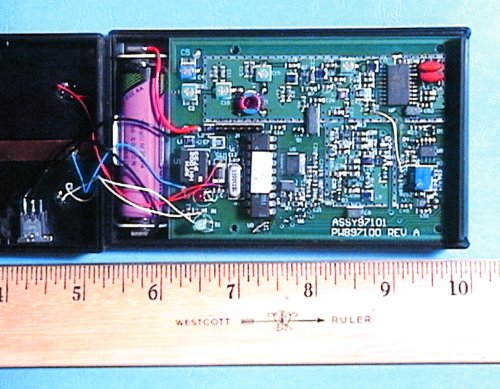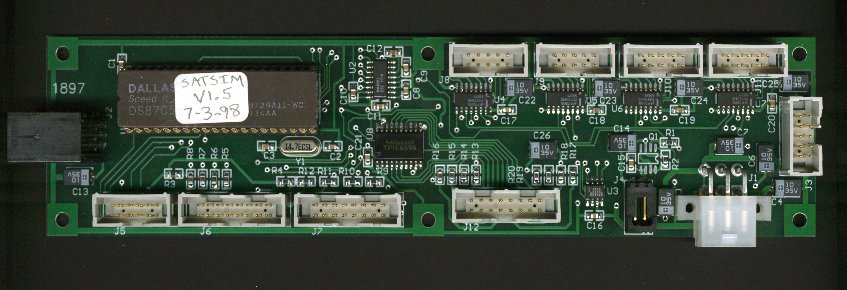
The following is a sampling of projects recently undertaken by Gulfview Research:
Biomedical Telemetry Receiver
This microcontroller-based scanning
VHF data receiver was developed to receive telemetry data from a
very-low-power
transmitter ingested by a human subject. Since the transmit
frequency
can drift with time and temperature, the receiver must continually scan
a range of frequencies to acquire and follow the data signal. In
order to conserve power, the receiver spends most of the time in a
low-power
shutdown state, waking up periodically to re-acquire the signal and
decode
the data. The data is then re-transmitted over a low-power UHF
link
to a central data collection receiver/computer. The receiver,
about
the size of a pack of cigarettes, is worn by the subject, and can
operate
for over 500 hours on a single lithium battery.

Amusement Vending Machine
This vending machine accepts input
data entered by the user, processes the data, and delivers a printed
report
containing information extracted from a stored data base. The
machine
uses a commercial off-the-shelf microprocessor board executing custom
application
software written in the C programming language. The
microprocessor
board reads various switches, controls several indicator lights,
displays
messages on an LCD display module, and outputs information on a small
thermal
line printer.
Communications Satellite
Simulator
This device simulates military UHF
communications satellites by providing frequency conversion,
attenuation,
noise, time delay, and doppler shift. This allows UHF satellite
communications
transceivers to be tested and evaluated without occupying valuable
satellite
channels. A custom microcontroller board was developed to control
RF synthesizers, programmable step attenuators, a noise source, and a
digital
signal processor board. The microcontroller board communicates
with
a commercial off-the-shelf hand-held ASCII terminal via an EIA-232C
serial
port to implement a menu-driven user interface. The unit can also
be controlled remotely by a host computer via a second EIA-232C serial
port. The microcontroller board is shown below.

© Copyright 1997-2009 Gulfview Research, Inc. All rights reserved.